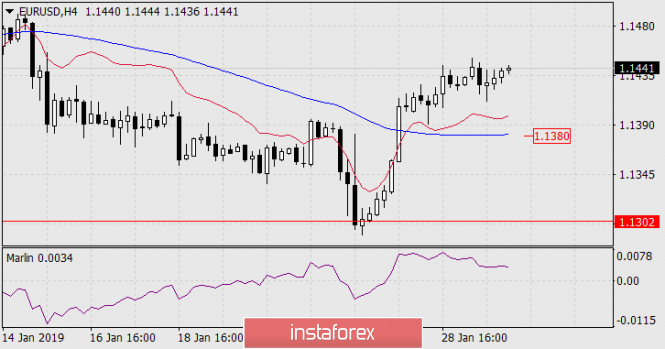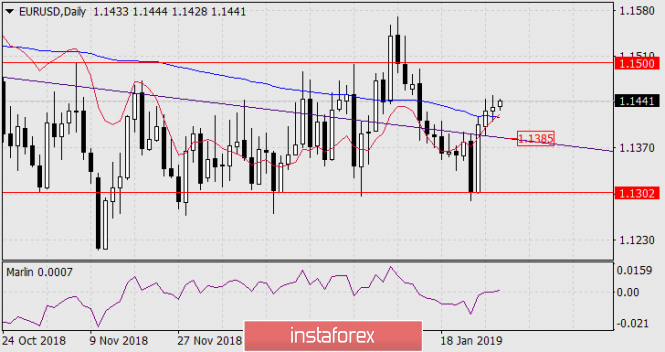On Tuesday, the British parliament voted against the postponement of the Brexit date to a later date in the event of the non-acceptance of an agreement with the EU. Meanwhile, the United States imposed a ban on working with the Venezuelan oil producer PDVSA. As a result, the pound sterling lost 92 points, but the euro remained at the local maximum due to the growth of oil by 2.15%.
Today, the focus will be on the FOMC monetary policy decision. The rate, of course, is expected to remain unchanged, but the focus has been shifted to the pace of the balance reduction of the Fed. Empirically, the current rate of reduction corresponds to a quarter-point rate increase, and a slowdown can result in a weaker dollar. But even if the regulator has such an intention, it would be understandable to decide to postpone any actions due to the finally unsatisfied shatdaun and wait for economic results for the 4th quarter, as well as for January-February, that is, to make a decision already in March meeting.

On the four-hour chart, price divergence with the Marlin oscillator has already been formed. If our expectations regarding today's FOMC meeting are met, the price will drop to the Krusenstern line on H4, which practically coincides with the support of the price channel line on a daily scale (1.1380 / 85).

If the Fed decides to "twist the bolt", it can even be understood as a measure of the latent crisis due to trade wars with China. In this case, we expect the growth of the euro to 1.1500. But we will define such a scenario with a probability of 30%.
The material has been provided by InstaForex Company - www.instaforex.com